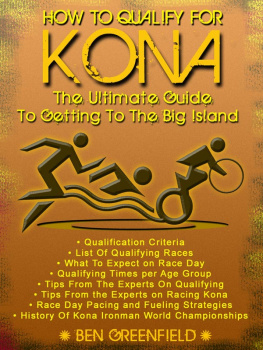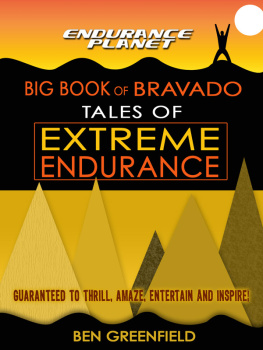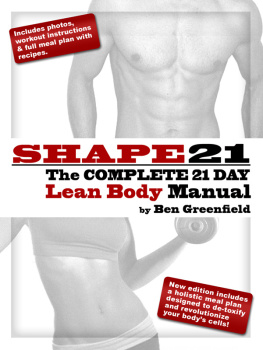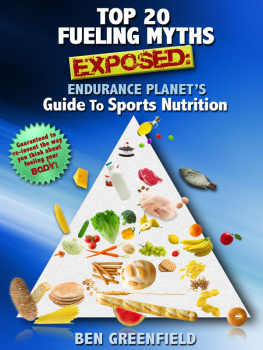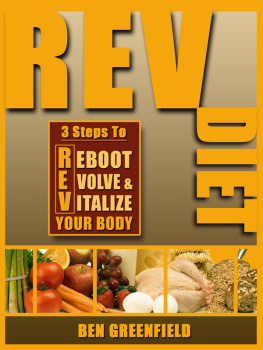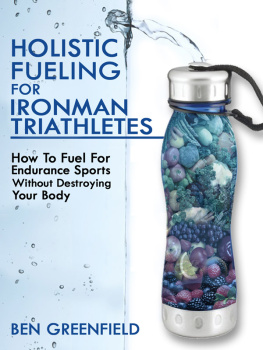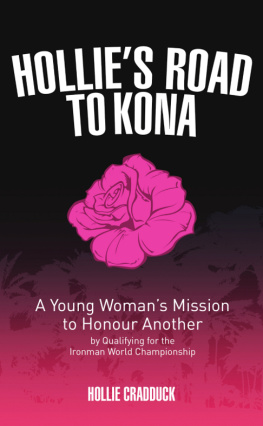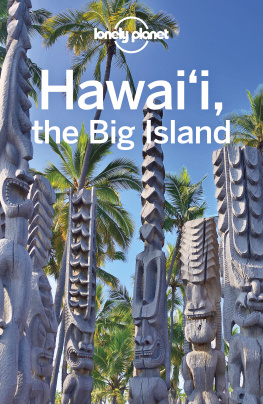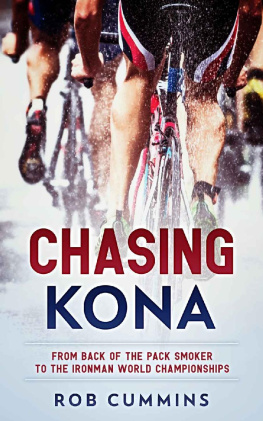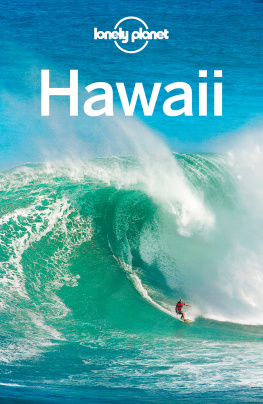Prior to beginning any exercise program, you must consult with your physician. You must also consult your physician before increasing the intensity of your training. The information in this book is intended for healthy individuals. Any application of the recommended material in this book is at the sole risk of the reader, and at the readers discretion. Responsibility of any injuries or other adverse effects resulting from the application of any of the information provided within this book is expressly disclaimed.
Price World Publishing
www.PriceWorldPublishing.com
Copyright 2012 by Ben Greenfield
All rights reserved. Neither this book, nor any parts within it may be sold or reproduced in any form without permission.
eISBN: 9781619841376
History of Kona Ironman World Championships

In 1978, a group of 15 elite athletes pushed the limits of the human body to an unheard of level of performance by combining three sports into one incredible raceand the Ironman World Championship was born.
The idea for the race actually originated in 1977, during an awards ceremony for the Oahu Perimeter relay. A heated debate sparked up between members of the Mid-Pacific Road Runners and the Waikiki Swim Club over which sport could claim the toughest athletes: swimming or running. U.S. Navy Commander
John Collins overheard one of the arguments, and pointed out that the great Eddy Merckx, a cyclist, boasted the highest recorded oxygen uptake of any athlete alive. He suggested that cyclists were in fact the fittest of athletes.
There seemed to be only one true way to settle the question: a race combining the three separate long-distance events already held on the island of Oahu: The Waikiki Rough Water Swim (2.4 miles), the Around Oahu Bike Race (115 miles and at the time a two-day event), and the Honolulu marathon (26.2 miles). Collins came up with the idea of shaving three miles off the bike race and running it counter-clockwise around the island so that it could begin at the finish line of the Waikiki Rough Water and end right at the traditional starting point of the Honolulu marathon. Whoever finishes first, Collins declared, well call him the Iron man.
The first Hawaii Ironman began at the dawn of February 18, 1978. Fifteen athletes started the raceeach handed a few sheets of paper listing the rules with these handwritten final words: Swim 2.4 miles! Bike 112 miles! Run 26.2 miles! Brag for the rest of your life. Twelve of these men would finish this first Kona Ironman. U.S. Navy Communications Specialist Gordon Haller became the original Ironman with a finishing time of 11 hours, 46 minutes, 58 seconds. Runner-up and Navy Seal John Dunbar came close to winning but wound up having to chug beer on the marathon course after his support crew ran out of water.
Champion cyclist Lyn Lemaire made history the following year when she placed sixth over-all and became the first ever Ironwoman. At that point, Collins was planning to convert the event into a relay in the hopes of drawing in more entrants. Luckily, Sports Illustrated journalist Barry McDermott was in town for a golf tournament. He watched the triathlon and wrote a ten-page report on it, and in 1980, hundreds of intrigued athletes sought to enter the race.
Kona has been home to the Ironman World Championships since 1981, when the events organizers made the decision to move the race to the less urbanized Big Island. The year of 1982 saw yet another evolution of the triathlon into the event that we know todaytwo races took place that year as the triathlon transitioned from February to October.
If youre looking for heroes then you need look no further than the roster of athletes who have crossed the finish line at Konawhether they ran, crawled or wheeled over it. One such hero is John Maclean. Maclean was an up-and-coming, 22-year old Australian rugby player when a road accident robbed him of the use of both legs. In 1997, his wheelchair crossed the finish line within the cut-off time and he officially finished the racehe had already unofficially completed the course twice.
Another such hero is Julie Moss, whose story inspired the Ironman mantra that just finishing is a victory. In 1982, Julie Moss was a 23-year old exercise physiology student and self-proclaimed non-athlete. Moss has said in interviews that her plan to race in Hawaii started out as a lark. She never envisioned winning the race her primary goal in competing was to research for her graduate thesis. Yet she found herself moving toward the finish line in first place, in front of television cameras and a huge crowd. With a hundred yards to go, the severely dehydrated college student collapsed but refused to give upshe crawled over the finish line just seconds behind that years champion, Kathleen McCartneywho didnt yet realize that she had overtaken the woman shed been running after for hours. Stories like these incite and inspire the Kona dreams of thousands of triathletes today.
Today, the world championships at Kona is one of the most esteemed and exclusive sporting events in the world. Some things have changed since the old days, when Commander John Collins was ready to transform the event into a relay to attract more participants. Today only 1,800 of the tens of thousands of athletes who dream of competing get the chance to race each year, and a series of qualifying races act as gatekeepers to the Kona World Championships. But the format of the race has remain unchanged since its inception, and the trade winds, volcanic rock and rough ocean waves are still waiting for you at Kona.
Qualification Criteria for Kona

Each year, more than 50,000 triathletes vie for the coveted chance at racing Kona. Each year, only 1,800 will ultimately prevail at securing their place in the greatest challenge the world of sports can offer. There are two paths leading to Kona. One, a lottery, through which a limited number200 worldwideof lucky people can win their spot. The other, the rigorous qualifying events hosted around the globe. By the numbers, its actually easier to get admission into Harvard.
You earn a slot by the place you finish in, not by your finishing time. Each qualifying event has a set number of qualifying slots to distribute among the triathletes who compete in age and gender groups. There are 12 five-year age groups to race in, starting with the 18-24 age group and going up in five-year increments to the 75+ age group. How many slots a qualifier has to dole out per age group varies from event to event, but all qualifiers will have at least one slot available for each represented age group. Some of the bigger events, like IM Canada, for example, can offer 10 or more slots to select age groups. If no athlete from a particular group enters the race, that coveted slot goes to the most heavily populated age group of the same gender.
Ironman USA lists the following races as Kona qualifiers for 2011, and the estimated total number of age group slots each race will offer:
Rohto Ironman 70.3: 28 slots |
Ford Ironman St. George: 67 slots |
Ford Ironman Coeur dAlene: 67 slots |
Ford Ironman Lake Placid: 67 slots |
Ford Ironman Louisville: 68 slots |
Ford Ironman Wisconsin: 65 slots |
Ford Ironman Florida: 65 slots |
| Ford Ironman Arizona: 65 slots |
Next page
